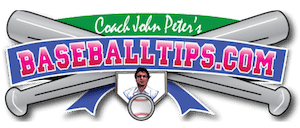A comprehensive guide for baseball field managers on how to rehabilitate and restore athletic turf after a season of heavy use, featuring professional techniques and a year-round maintenance calendar.
_______________________________
Athletic Field Turf Recovery: Post-Season Renovation Guide
When the final out is called and the season wraps up, your baseball field deserves some serious recovery time. After months of cleats, slides, and weather extremes, even the most resilient athletic turf shows signs of wear. At BaseballTips.com, we’ve helped countless field managers transform beaten-down diamonds into showcase fields ready for next season. This comprehensive guide walks you through professional-grade restoration techniques that will have your field bouncing back stronger than ever.
Assessing Your Field’s Post-Season Condition
Before diving into renovation work, take time to properly evaluate your field’s current state. Walk the entire playing surface, paying special attention to high-traffic areas like the batter’s box, pitcher’s mound approach, base paths, and outfield positions. Look for compacted soil, bare spots, drainage issues, and uneven surfaces. Document these problem areas with photos or notes – this creates a baseline to measure your renovation success and helps prioritize your recovery efforts.
Many field managers make the mistake of rushing into repairs without proper assessment. Remember, different damage types require different solutions. Soil compaction needs aeration, while bare spots might need reseeding or sodding. Your restoration plan should be as unique as your field’s specific wear patterns.
Essential Post-Season Recovery Techniques
Deep Core Aeration
The foundation of effective field recovery starts below the surface. After a long season, your turf’s soil becomes severely compacted, especially in high-traffic zones. This compaction restricts root growth, limits water infiltration, and creates an inhospitable environment for healthy grass. Core aeration – removing small plugs of soil throughout your field – creates breathing room for your turf’s root system.
For baseball fields, we recommend deep-tine aeration that penetrates 6-8 inches into the soil profile. This depth addresses compaction issues that surface-level aeration might miss. Schedule your aeration when soil moisture is moderate – too dry and the tines won’t penetrate properly; too wet and you’ll create more compaction problems.
Overseeding Strategic Areas
Once aeration is complete, overseeding worn areas gives your field a fighting chance to fill in before next season. Choose grass varieties that match your existing turf but consider mixing in some more wear-resistant cultivars in high-traffic zones. For cool-season grasses (like Kentucky bluegrass or perennial ryegrass), early fall offers ideal germination conditions with warm soil and cooler air temperatures.
When overseeding, ensure good seed-to-soil contact by lightly raking the area after spreading seed. Apply a thin layer of topdressing to protect the seed and provide essential nutrients. Keep the seeded areas consistently moist until germination occurs, which typically takes 7-21 days depending on grass variety and weather conditions.
Strategic Topdressing
Applying a quality topdressing mixture helps level the playing surface, improves soil structure, and provides a nurturing environment for new grass seedlings. For most baseball fields, a mix of 70% sand and 30% organic material works well, though this ratio may need adjustment based on your existing soil profile.
Apply topdressing in thin, even layers (¼ inch maximum at one time) and work it into the surface with a drag mat or brush. This integration with your existing soil profile is crucial – thick, unincorporated layers of topdressing can create layering issues that lead to poor drainage and shallow root development.
Year-Round Maintenance Calendar
Fall (Post-Season)
The post-season window is your prime renovation opportunity. Beyond the core techniques already mentioned, fall is ideal for soil testing, pH adjustments, and applying slow-release fertilizers. Remove all debris, address any irrigation issues, and consider installing turf blankets in severe problem areas to encourage faster spring green-up.
Winter
While active field work diminishes in winter, this season offers valuable planning time. Inventory your equipment, order supplies for spring, and develop your maintenance budget. In regions with moderate winters, continue monitoring field conditions and removing debris that could smother turf. Winter is also perfect for staff training and certification programs.
Spring (Pre-Season)
As temperatures rise, begin light maintenance practices like mowing (never removing more than one-third of the grass blade at once). Apply pre-emergent herbicides if crabgrass has been problematic, and begin a regular fertility program based on soil test results. Inspect and repair irrigation systems before summer demands peak.
Summer (In-Season)
During heavy use periods, focus on consistent mowing, proper irrigation management, and spot treatments for wear areas. Raise mowing heights slightly during extreme heat to reduce plant stress. Implement a regular rotation for practice areas to distribute wear more evenly across your fields.
Professional Equipment Considerations
Having the right tools dramatically improves renovation results. Professional-grade aerators, overseeders, and topdressers complete tasks more efficiently and effectively than consumer-level equipment. For smaller programs with budget constraints, consider equipment sharing with neighboring facilities or renting professional equipment for your intensive post-season work.
At BaseballTips.com, we’ve tested countless field maintenance tools over our 20+ years in the industry. We stand behind every piece of equipment we recommend because we’ve seen the results firsthand on real athletic fields.
Ready to Revitalize Your Baseball Field?
Your athletic field represents a significant investment – both financially and as the foundation of your baseball program’s success. Implementing a comprehensive post-season recovery plan protects that investment and ensures your players have a safe, high-performance surface when next season begins.
Need personalized advice for your specific field conditions? Our team of former coaches and field management experts is ready to help. Call us at 1-800-487-7432 Monday through Friday (10am-7pm EST) for product recommendations or to discuss your field’s unique challenges.
Remember, great baseball begins with great fields – and great fields don’t happen by accident. They’re the result of knowledgeable care and proper equipment. Let’s make your field exceptional together.
